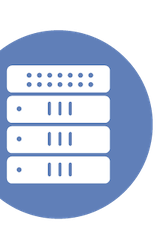Move from the AI Pilot Circle of Doom to Achieving Outcomes Today with Kamiwaza Enterprise Outcome Support
Event: AI Field Day 6
Appearance: Kamiwaza Presents at AI Field Day 6
Company: Kamiwaza.AI
Video Links:
- Vimeo: Move from the AI Pilot Circle of Doom to Achieving Outcomes Today with Kamiwaza Enterprise Outcome Support
- YouTube: Move from the AI Pilot Circle of Doom to Achieving Outcomes Today with Kamiwaza Enterprise Outcome Support
Personnel: Luke Norris, Matt Wallace
Discover how Kamiwaza’s outcome-driven approach ensures measurable success for organizations of any size. This novel approach enables not just break-fix support but true outcome-based support of AI workflows and applications. The Kamiwaza platform facilitates innovation across various sectors, including manufacturing and government, as demonstrated through real-world use cases presented at AI Field Day 6. The presentation showcased the platform’s capabilities through live demos, highlighting its user-friendly interface and powerful features for managing and deploying AI models, even large language models.
A core element of the Kamiwaza platform is its cluster management system, enabling seamless deployment and scaling of models across various environments, from local machines to cloud-based clusters. The platform leverages Ray, a distributed computing framework, for efficient load balancing and resource allocation. Demonstrations included data ingestion and processing pipelines, showcasing the platform’s ability to handle large datasets and distribute workloads effectively across multiple nodes. The presentation also emphasized the platform’s developer-centric design, providing tools and APIs for building and integrating custom AI applications.
Furthermore, the presentation explored the concept of “agents” within the Kamiwaza ecosystem, illustrating how these agents can automate complex tasks and workflows. Examples included automated data conversion, report generation, and even the creation of new applications based on user requests. The agents’ capabilities were demonstrated through live demos, emphasizing their potential to significantly accelerate AI-driven processes and improve efficiency. The presenters highlighted the importance of human oversight and collaboration, emphasizing that while agents automate tasks, human experts can provide crucial guidance, ensuring accuracy and contextual understanding, particularly when dealing with complex or sensitive data.







